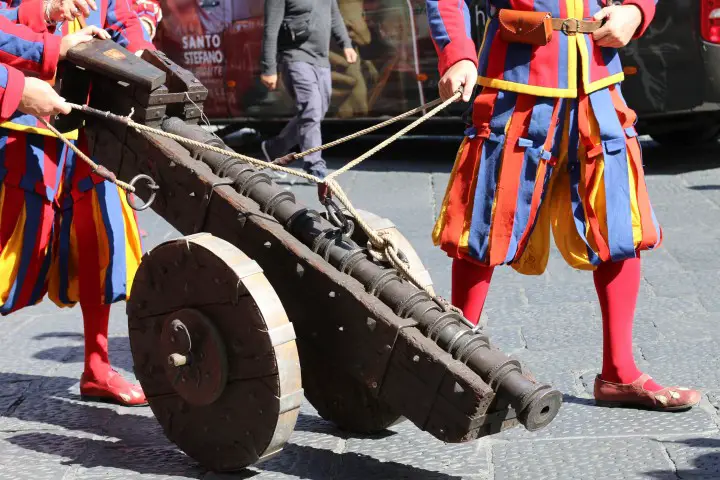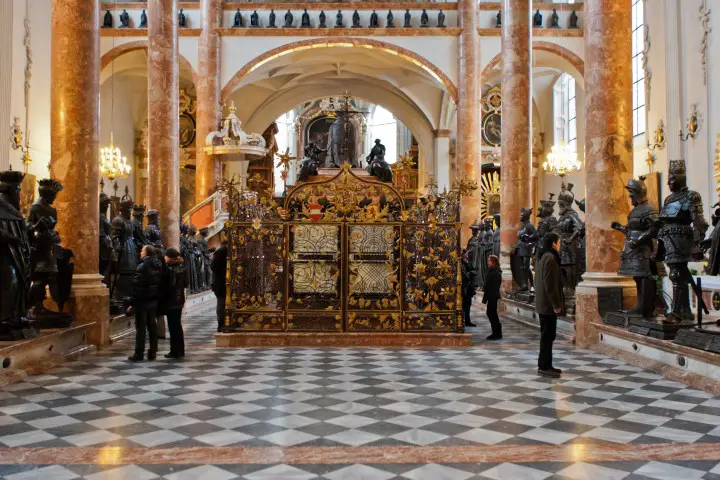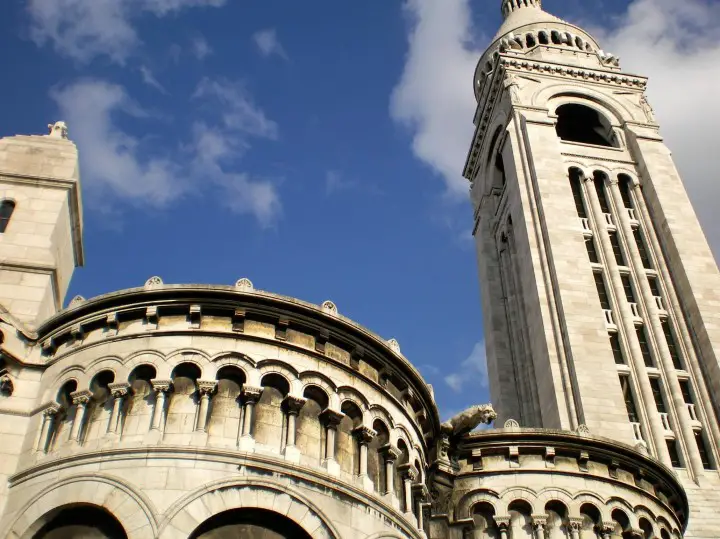The Renaissance period in Europe, spanning from the 14th to the 17th century, was a time of significant cultural, intellectual, and artistic growth. It was characterized by various groundbreaking practices and ideas that strongly influenced the course of history. Let’s explore the major characteristics of the Renaissance in Europe:

- Humanism: One of the most prominent features of the Renaissance was Humanism. This ideology emphasized the worth and importance of the individual. It promoted the study of classical Greek and Roman literature, philosophy, and art, focusing on the human experience and achievements. Humanism celebrated human potential, knowledge, and creativity.
It reformed traditional education by encouraging the development of critical thinking and a well-rounded education that encompassed a wide range of subjects. Humanists believed in the capability of humans to shape their own destinies and improve society through reason and rational thinking.
Humanism also emphasized the importance of secularism and a focus on worldly matters rather than solely religious concerns. This shift allowed for a greater exploration of the natural world and a questioning of traditional religious beliefs and practices.
Art during the Renaissance also reflected humanist ideals. Artists sought to depict the beauty and complexity of the human form, often drawing inspiration from ancient Greek and Roman sculpture. They used techniques such as perspective and chiaroscuro to create a more realistic representation of the human body and the world around them.
One of the key figures of the Renaissance, Leonardo da Vinci, epitomized the humanist ideals. He saw no separation between art and science, believing that both disciplines were essential to understanding the world and expressing human creativity. Many of his works, such as the iconic Mona Lisa, showcased his keen observation and appreciation for the human form.
Overall, Humanism was a pivotal aspect of the Renaissance, as it placed the individual at the center of intellectual and artistic pursuits. It celebrated human potential and creativity, paving the way for groundbreaking discoveries and artistic achievements that continue to influence and inspire us today. - Secularism: Another key characteristic was the shift towards secularism. The Renaissance saw a move away from the dominance of the Catholic Church, allowing for an increase in scientific and intellectual exploration. This led to the rise of a more secular society that valued worldly pursuits, worldly knowledge, and human achievements.
The shift towards secularism during the Renaissance marked a significant departure from the dominant influence of the Catholic Church. It paved the way for a surge in scientific and intellectual inquiry, as individuals began to prioritize worldly exploration over religious adherence.
This transformative shift in ideology gave rise to a more secular society that greatly appreciated worldly pursuits, the acquisition of knowledge, and the accomplishments of humanity. - Revival of Classical Knowledge: The Renaissance was an era of rediscovery and admiration for the classical knowledge of ancient Greece and Rome. Scholars and artists studied and imitated the works of ancient philosophers, writers, and artists such as Plato, Aristotle, Cicero, and Leonardo da Vinci.
This revival of classical knowledge greatly influenced various aspects of society, including literature, art, and architecture. During this period, literature underwent a transformation as writers drew inspiration from ancient Greek and Roman texts. They sought to emulate the eloquence and intellectual depth found in the works of Plato, Aristotle, and Cicero. The writing style of the Renaissance often incorporated classical themes, ideals, and forms, resulting in a blend of old and new.
Similarly, the artistic realm experienced a renewed focus on the human form and the natural world. Artists admired the skill and craftsmanship of ancient Greek sculptors and sought to capture the same level of realism and perfection in their own works. Leonardo da Vinci, a true Renaissance man, exemplified this as he explored various disciplines, from painting to anatomy, always seeking to understand and recreate the beauty of the human body and its connection to nature.
Architecture also saw a revival during the Renaissance. Inspired by the grandeur of ancient Roman buildings, architects began to study and emulate their structures. The use of columns, arches, and domes became prominent, adding a sense of grandiosity and stability to the buildings of the time.
Overall, the Renaissance was a period of immense admiration for the wisdom and achievements of ancient Greece and Rome. The study and imitation of classical knowledge not only influenced individual scholars and artists, but it also deeply impacted society as a whole, shaping the cultural and intellectual landscape of the time. - Artistic Expression: The Renaissance witnessed a remarkable burst of creativity in the arts. Artists like Leonardo da Vinci, Michelangelo, and Raphael created some of the most significant masterpieces in history. Paintings, sculptures, and architecture became more realistic and focused on capturing the natural beauty of the world.
The use of perspective, light, and shadow revolutionized artistic techniques, breathing life into the works and creating an unparalleled depth. The depth and dimension achieved through these techniques added a captivating sense of realism, drawing viewers into the artworks themselves. - Scientific and Technological Advancements: The Renaissance marked a period of significant scientific advancement and technological progress. Scholars explored new theories in fields such as astronomy, physics, and anatomy. The invention of the printing press by Johannes Gutenberg revolutionized the dissemination of knowledge, making books more widely accessible.
The printing press played a crucial role in the scientific and technological advancements of the Renaissance. Prior to this invention, books were painstakingly handwritten, limited in quantity, and expensive, which severely restricted access to knowledge. Johannes Gutenberg’s innovative printing press, developed around 1440, revolutionized the production of books. It allowed for faster and cheaper mass production, making books more widely available than ever before.
With the printing press, scholars and scientists were able to disseminate their findings, theories, and advancements to a much larger audience. This led to a rapid exchange of ideas and contributed to the flourishing of scientific knowledge during the Renaissance. Scientists like Nicolaus Copernicus, Galileo Galilei, and Isaac Newton were among those who benefited from this technological advancement.
In the field of astronomy, the printing press enabled astronomers to distribute their observations and theories to other scholars and institutions across Europe. This facilitated the formulation of the heliocentric model, proposed by Copernicus, which challenged the geocentric view of the universe held since ancient times. Such advancements in astronomy paved the way for further exploration and understanding of celestial bodies.
In physics, the printing press played an instrumental role in the dissemination of groundbreaking theories. For instance, Galileo Galilei’s discoveries and experiments, such as his insights into the laws of motion, were widely circulated through printed materials. This allowed other scientists to build upon his work, ultimately propelling the discipline of physics forward.
Additionally, the printing press facilitated advancements in the field of anatomy. Books on human anatomy, such as Andreas Vesalius’ “De humani corporis fabrica,” were disseminated on a larger scale. These texts presented detailed illustrations and descriptions of various anatomical structures, challenging the previously held beliefs and assumptions about the human body. This newfound access to anatomical knowledge greatly contributed to the progress of medicine and surgery during the Renaissance.
The invention of the printing press by Johannes Gutenberg during the Renaissance facilitated the widespread dissemination of scientific and technological knowledge. This transformative breakthrough allowed scholars, scientists, and thinkers to share their ideas, theories, and discoveries with a broader audience. The printing press played a significant role in advancing various fields, including astronomy, physics, and anatomy, ultimately leading to unparalleled scientific and technological progress during this pivotal period in history. - Patronage of the Arts: The Renaissance was a time of great patronage of the arts. Wealthy and powerful individuals, including the Medici family in Florence, sponsored artists, scientists, and scholars.
This financial support allowed artists and thinkers to pursue their creative endeavors, leading to the flourishing of Renaissance culture. During the Renaissance, the patronage of the arts played a pivotal role in the flourishing of creative expression and cultural development.
Wealthy and influential figures, such as the Medici family in Florence, generously supported artists, scientists, and scholars through financial backing. This patronage enabled individuals pursuing various creative disciplines to dedicate their time and resources to their respective crafts.
With the backing of patrons, artists were able to immerse themselves in their artistry without concern for their livelihoods. They could experiment with innovative techniques, explore different artistic styles, and push the boundaries of their crafts. This freed them from the limitations imposed by financial constraints, allowing their creativity to soar.
Additionally, scholars and scientists benefited greatly from patronage during the Renaissance. Sponsors provided funding for research, the publication of scientific works, and the establishment of educational institutions. This support fostered an environment that encouraged intellectual curiosity and the pursuit of knowledge. As a result, groundbreaking discoveries and advancements were made in various fields, including astronomy, anatomy, and physics.
The Medici family, in particular, played a significant role in shaping the Renaissance. Through their patronage, they gathered a circle of artists and intellectuals, creating an environment conducive to artistic and intellectual exchange. This gathering of talented individuals led to collaborations, cross-pollination of ideas, and the emergence of new artistic movements.
The impact of patronage extended beyond individual artists and scholars; it influenced the entire cultural landscape of the time. Cities like Florence became centers of artistic and intellectual activity, attracting talent from all over Europe. The support provided by patrons fueled a competitive atmosphere, where artists and thinkers constantly strived to demonstrate their mastery and push the boundaries of their respective fields.
Patronage of the arts played a crucial role in the Renaissance era. The financial support from wealthy and powerful individuals, such as the Medici family, allowed artists, scientists, and scholars to pursue their creative endeavors without constraint. This patronage cultivated an environment of artistic and intellectual exploration, leading to the flourishing of Renaissance culture and leaving a lasting impact on the history of art and knowledge. - Spread of Ideas: The Renaissance was an era of increased communication and exchange of ideas. The invention of the printing press, combined with the exploration and colonization of new lands, facilitated the dissemination of knowledge across Europe.
The spread of ideas played a crucial role in intellectual development and the dissemination of Renaissance principles. During the Renaissance, the invention of the printing press revolutionized the way information was shared. This newly developed technology allowed for the mass production of books, making them more accessible to a larger audience. As a result, ideas and knowledge could be disseminated at a much faster pace than ever before. The printing press not only enabled the reproduction of classical texts, but also facilitated the circulation of new ideas and philosophies that emerged during this period.
Furthermore, the exploration and colonization of new lands during the Renaissance era played a significant role in the spread of ideas. As Europeans ventured into uncharted territories, they encountered different cultures and civilizations with unique perspectives and knowledge. These encounters fostered an exchange of ideas, as Europeans learned from the indigenous people they encountered and vice versa. This cross-cultural communication led to the introduction of new concepts, technologies, and practices, enriching the intellectual development of European society.
The dissemination of Renaissance principles was another crucial aspect of the spread of ideas during this era. Renaissance thinkers emphasized the importance of humanism, individualism, and the pursuit of knowledge. Through the exchange of ideas, these principles gained momentum and spread across Europe. Intellectual centers such as Florence, Rome, and Paris became hubs for scholars, artists, and scientists to share their discoveries and philosophies. The spread of Renaissance ideals not only influenced intellectual development but also contributed to the transformation of various fields, including art, literature, science, and politics.
The increased communication and exchange of ideas during the Renaissance era were facilitated by the invention of the printing press and the exploration of new lands. These developments allowed for the widespread dissemination of knowledge, fostering intellectual development and the dissemination of Renaissance principles. The spread of ideas shaped the cultural, social, and intellectual landscape of Europe during this transformative period in history.

In summary, the major characteristics of the Renaissance in Europe include a focus on humanism, a move towards secularism, a revival of classical knowledge, artistic expression, scientific and technological advancements, patronage of the arts, and the spread of ideas. These characteristics collectively shaped the Renaissance into a transformative period that laid the foundation for modern society.

